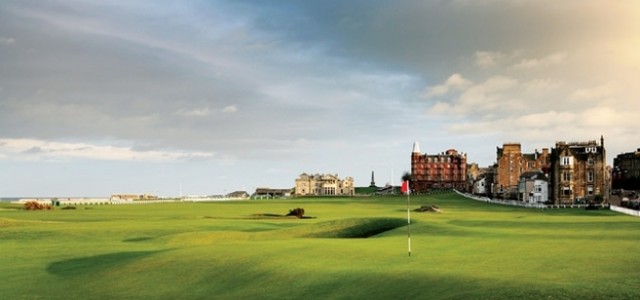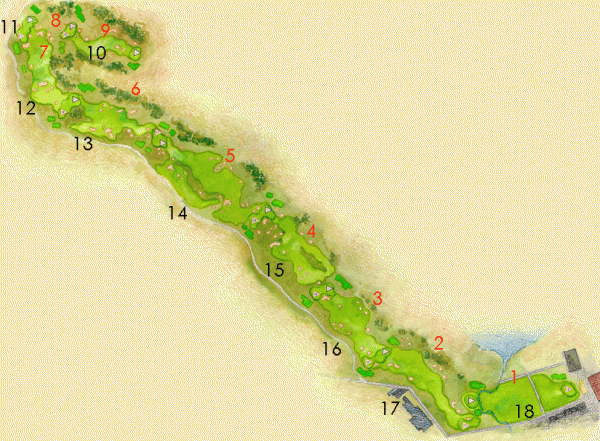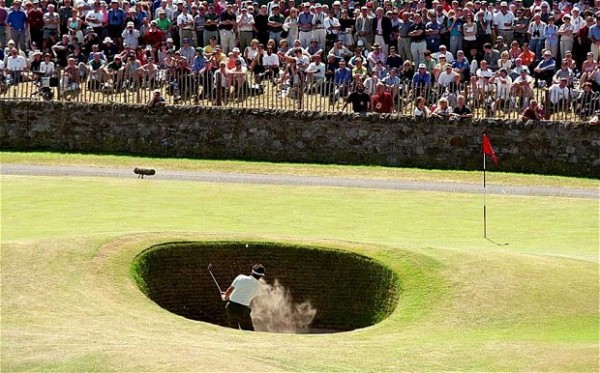With the British Open just around the corner, it’s best to get a glimpse of what the PGA golfers are about to get themselves into. The Open Championship will be played at the Old Course of St. Andrews in Scotland for the 29th time in the history of the event.
St. Andrews Links is one of golf’s most historical and famous sites, and with due reason. Read on as we list down five informative and entertaining facts about the storied grounds known to many as “the home of golf”.
Better be on top of the action that’s set to take place this week at The Open as early as now. Check out our complete preview of the tournament here, as well as our selection of sleeper picks who might just have what it takes to take home the Claret Jug.
[sc:MultiSportArticles ]Five Things You Need to Know About St. Andrews
It’s Open to the Public
St. Andrews is not just exclusively for the professionals; it’s also open to the public at all year round (except on Sundays).
[sc:Golf240banner ]There are a total of seven different courses to choose from, with the Old Course being one of the world’s most renowned courses that every golf aficionado must visit or play through once in their life (more on this fabled course on the succeeding topics).
Among the other courses on the links of St. Andrews are the New Course, Balgrove, Eden, Jubilee, Strathtyrum, and the most recent addition the Castle Course, which opened in 2008. Get ready to bring out your checkbook if you want the true Scottish links experience, as playing a round on any of these courses will cost you about north of $250.
The Old Course’s Layout
All the action at the British Open will take place on the Old Course, which is known to be one of, if not the oldest golf course in the world at over 600 years in existence. The Old Course has had such a rich tapestry of stories and impact on the game of golf itself. One notable and fun fact is that to this day, people refer to the first nine holes as having to go ‘out’, and the back nine as the inward half or having to go back ‘in’.
Those terms were actually coined mainly due to the Old Course of St. Andrews itself. As seen on the illustration of the course’s layout above; the trip from the 1st to the 9th hole is seen as heading ‘out’ of the clubhouse, and the 10th through 18th holes serve as the trip to go back ‘in’ to the clubhouse.
And just like a palindrome, you will see the same order of pars on the Old Course from the front nine to the back nine given the nature of the course’s simple and almost literally straightforward design. There are also only two par 3’s (8th and 11th holes) and two par 5’s (5th and 14th holes) that mirror each other on the course. To add, 14 of the 18 holes on the Old Course share the same greens.
The First Golf Course to Have Bunkers
Up for some more St. Andrews trivia? Well here’s a doozy for you then: would you believe that the first sand traps — or bunkers as we call it — originated from the Old Course?
It turns out that the course was built on sand-based land, and strong gusts of wind are prevalent in the area. Not only that, but the course used to double as a place for grazing sheep back in the days of yore. The sheep do not favor the strong winds, and thus, they collectively burrow into the ground to protect themselves from the maddening winds.
Tom Morris, St. Andrews’ keeper of the greens back at around the 1800’s, decided not to mess with the natural layout of the course. So goes the origin of one of golf’s most avoided parcels of land that we now call a bunker.
The Old Course has 112 bunkers, each with a unique name and backstory. Some of the most infamous holes in all of golf are found on the historic course, such as the 10-foot deep “Hell Bunker” on the 14th and the “Road Bunker” on the 17th hole.
Create a betting account now and tee your bets off with the best sportsbook around.
The Road Hole
Speaking of the 17th hole, this is the Old Course’s most famous hole — and probably the most popular hole in the history of golf — also known as the Road Hole.
The Road Hole is is exactly what its name suggests. There is an actual paved road and a wall that was built lining one side of the 17th green, and a deep sand pit – known to most as the “Road Bunker” – lying nearby (as seen in the picture above). Not only that, but players would have to tee off over a part of the Old Course Hotel’s structure before getting to the green.
This hole has been heralded as one of the toughest and most unique holes in the world. And even with all the unconventional obstructions in the way, players must continue to play the ball as it lies. Just take a look at Miguel Angel Jimenez’s clever shot where he ricocheted the ball off the wall to put it back into play on the 17th’s green.
Old Tom Morris
Nobody embodies the spirit and traditions of St. Andrews like “Old” Tom Morris Sr.
As mentioned earlier, Morris was a golf course designer who ultimately ended up as St. Andrews’ keeper of the greens and also the grounds’ head professional. He also had the most part in shaping the Old Course to what it is now.
Old Tom Morris won the British Open himself four times in the 1860’s, and so did his son, “Young” Tom Morris Jr. Morris died in 1908 at the age of 87, and he and his son are both buried at the St. Andrews Cathedral. His legacy lives on with the 18th hole being named after him, and his store, the Tom Morris Shop – which was built back in 1866 – still stands and remains operational to this day.
With so much history about the Old Course and the St. Andrews Links in general, this year’s British Open will surely be a sight to behold. Can the likes of Jordan Spieth – who is seeking his third consecutive Majors title and a +400 favorite to win the event – add his name as one of the greatest players to ever play the prestigious course? Tune in this this Thursday, when The Open Championship is set to tee off.
[sc:Golf490baner ]4,043 total views, 1 views today










